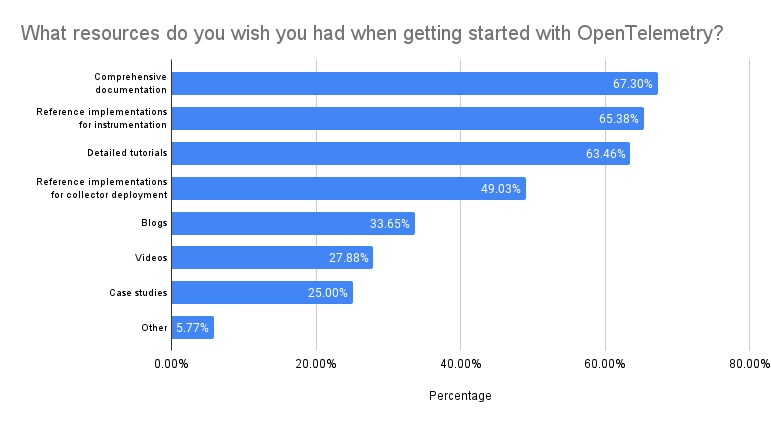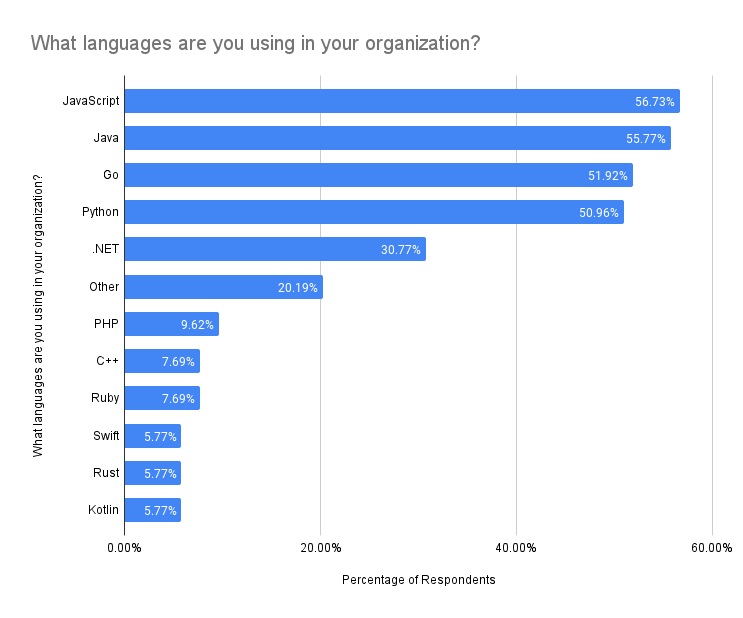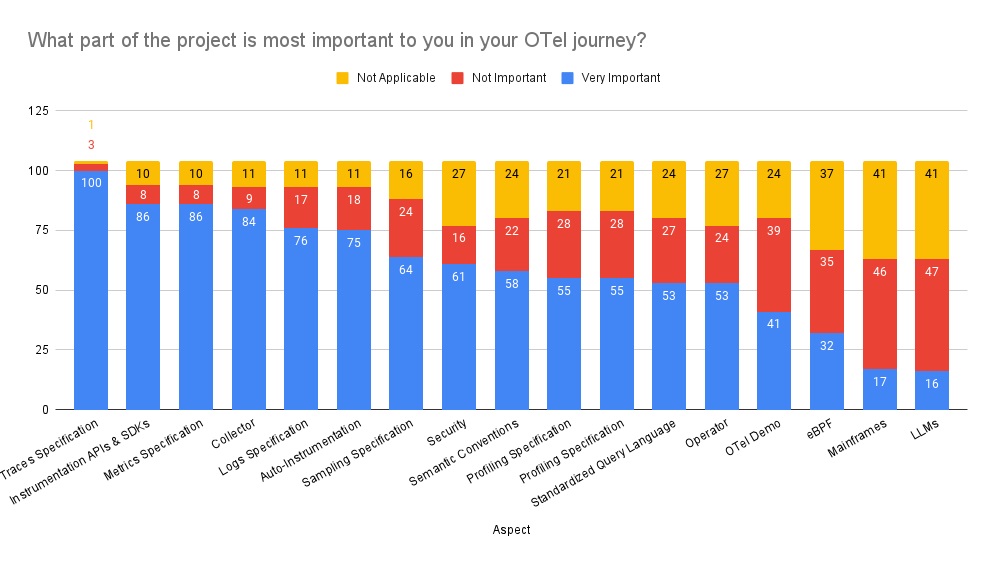Organizations can face significant challenges, ranging from skill development to user adoption, when implementing new technologies. This is particularly evident in the realm of observability, an increasingly critical area for organizations striving to maintain optimal performance and reliability across digital applications. Recently, the OpenTelemetry End-User SIG surveyed more than 100 OpenTelemetry users to learn more about their observability journeys and what resources deliver the most value when establishing an observability practice.
Most respondents have initiated their observability journey, whether they are in the process of standing up an observability practice or are already well-established. Regardless of experience level, there's a clear need for more support and continued education, especially in helping those who are just starting with observability technologies. When asked what resources they wish they had when getting started with OpenTelemetry, more than half (67%) said they wanted comprehensive documentation, quickly followed by reference implementations for instrumentation (65%), and more detailed tutorials (63%).


When getting started with observability, most respondents are working with containerization technologies, with about 80% using Kubernetes and 63% using Docker.

While quite a few languages are used across organizations, more than 50% of respondents utilize JavaScript, Java, Go, and Python.

The majority of respondents stated that Traces Specification, Instrumentation APIs and SDKs, and Metrics Specification are the most important aspects of their OpenTelemetry journeys.

Observability will continue to be a cornerstone for organizations to not only measure and understand application performance, but to also build resilience into technology stacks. It's imperative for leaders to empower their teams with the necessary tools and knowledge, as they play a pivotal role in the successful adoption and implementation of observability practices. By equipping teams with the proper resources, organizations can overcome the common challenges associated with implementing new technologies, ensuring a smoother transition and maximizing the full potential of their observability initiatives.
The Latest
Artificial intelligence (AI) is rapidly reshaping industries around the world. From optimizing business processes to unlocking new levels of innovation, AI is a critical driver of success for modern enterprises. As a result, business leaders — from DevOps engineers to CTOs — are under pressure to incorporate AI into their workflows to stay competitive. But the question isn't whether AI should be adopted — it's how ...
The mobile app industry continues to grow in size, complexity, and competition. Also not slowing down? Consumer expectations are rising exponentially along with the use of mobile apps. To meet these expectations, mobile teams need to take a comprehensive, holistic approach to their app experience ...
Users have become digital hoarders, saving everything they handle, including outdated reports, duplicate files and irrelevant documents that make it difficult to find critical information, slowing down systems and productivity. In digital terms, they have simply shoved the mess off their desks and into the virtual storage bins ...
Today we could be witnessing the dawn of a new age in software development, transformed by Artificial Intelligence (AI). But is AI a gateway or a precipice? Is AI in software development transformative, just the latest helpful tool, or a bunch of hype? To help with this assessment, DEVOPSdigest invited experts across the industry to comment on how AI can support the SDLC. In this epic multi-part series to be posted over the next several weeks, DEVOPSdigest will explore the advantages and disadvantages; the current state of maturity and adoption; and how AI will impact the processes, the developers, and the future of software development ...
Half of all employees are using Shadow AI (i.e. non-company issued AI tools), according to a new report by Software AG ...
On their digital transformation journey, companies are migrating more workloads to the cloud, which can incur higher costs during the process due to the higher volume of cloud resources needed ... Here are four critical components of a cloud governance framework that can help keep cloud costs under control ...
Operational resilience is an organization's ability to predict, respond to, and prevent unplanned work to drive reliable customer experiences and protect revenue. This doesn't just apply to downtime; it also covers service degradation due to latency or other factors. But make no mistake — when things go sideways, the bottom line and the customer are impacted ...
Organizations continue to struggle to generate business value with AI. Despite increased investments in AI, only 34% of AI professionals feel fully equipped with the tools necessary to meet their organization's AI goals, according to The Unmet AI Needs Surveywas conducted by DataRobot ...
High-business-impact outages are costly, and a fast MTTx (mean-time-to-detect (MTTD) and mean-time-to-resolve (MTTR)) is crucial, with 62% of businesses reporting a loss of at least $1 million per hour of downtime ...
Organizations recognize the benefits of generative AI (GenAI) yet need help to implement the infrastructure necessary to deploy it, according to The Future of AI in IT Operations: Benefits and Challenges, a new report commissioned by ScienceLogic ...







